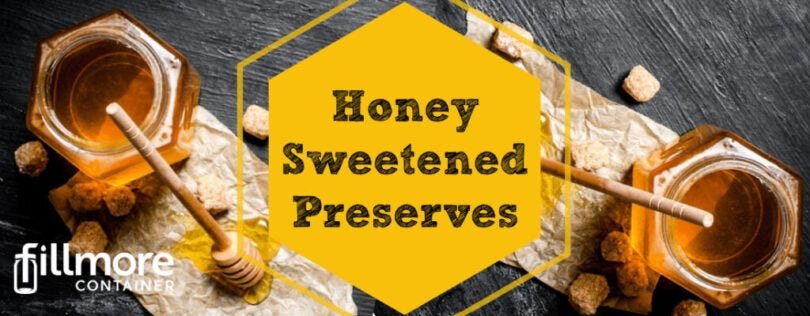
Honey Sweetened Preserves
(Updated – May 2023)
Honey has a long history of being the favorite natural sweetener, so it’s resurgence into preserving recipes isn’t surprising.
It’s a natural, much healthier alternative to processed sugar or artificial sweeteners. Its supporting role as a sweetener allows the flavor profile of the fruit or other ingredients to shine through instead of the super sweetness of sugar.
Substituting Honey for Sugar with Pomona’s Pectin:
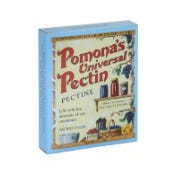 If you’re familiar with Pomona’s Pectin, you know that there are 2 parts; a liquid – calcium water (that you’ve already made using water, according to the directions on the packet) and pectin powder. The powder is what gets incorporated to the sweetener of choice. When you’re substituting honey, you simply combine the pectin powder with the honey & mix well before you add the honey to your fruit.
If you’re familiar with Pomona’s Pectin, you know that there are 2 parts; a liquid – calcium water (that you’ve already made using water, according to the directions on the packet) and pectin powder. The powder is what gets incorporated to the sweetener of choice. When you’re substituting honey, you simply combine the pectin powder with the honey & mix well before you add the honey to your fruit.
Important things to keep in mind:
- Honey is (believe it or not!) a stronger sweetener than sugar, so if you’re goal is to replace the sugar with honey, ¾ cup honey will equal 1 cup sugar.
- Your Jam color my darken more with honey sweetened recipe, but they should still last at least a year in the jar, if properly sealed. Sugar does a better job in maintaining that brighter shade – so if you’re really particular about the color of your jam, it’s something to consider.
- Pay attention to the type of honey that you’re purchasing or planning to use. Most apiaries will label their honey clearly with the type of honey – and the source of the botanical flavor source – such as clover, wild flower or alfalfa and so forth. For preserves, a mild honey is often recommended.
- Once you open your honey-sweetened preserves, you can experience a shorter refrigerator life. Here are some suggestions – like with most jams, jellies & preserves – consider how quickly your family or household will consume that opened jar and go from there. If you don’t consume it quickly, or if you enjoy having 5 jam jars going at a time, go with some smaller jars like these. Do your best to avoid contamination – try to use a clean knife or spoon for scooping jam and resist spreading it and then double dipping.
- Honey does not react with pectin in the same manner in which sugar will in order to create the “set”. In light of that, only pectin formulations that do not require sugar; such as Pomona’s Pectin or sugar-free pectin are recommended.
- It is not recommended to feed honey to children under 1 year of age, or who have compromised immune system without the approval of your pediatrician.
Recipe
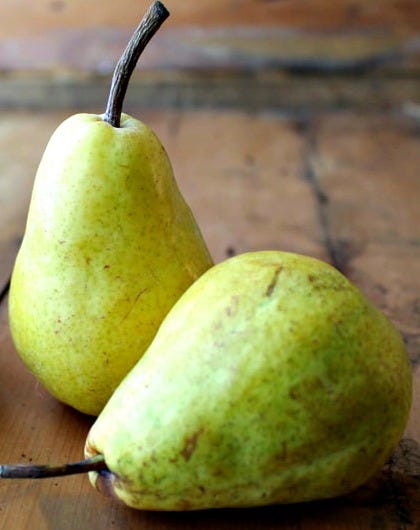
- 6 pounds ripe thin skinned pears (like Bartlett or Bosc)
- 3 cups honey divided
- 2 vanilla beans split and scraped
- 2 lemons zested and juiced
- 2 tablespoons calcium water
- 2 tablespoons Pomona’s Pectin powder
-
Prepare a boiling water bath canner and enough jars to hold 5-6 pints of jam (the yield varies depending on how much water the pears contain).
-
Wash, core and chop pears. Place them in a low, wide pan and add 1/2 cup water, 2 cups honey, vanilla seeds and beans, the lemon zest and juice, and the calcium water. Stir to combine and place on the stove. Set the burner to medium-high heat and cover the pot.
-
Cook the pears, stirring regularly, until they are soft. This should take 35-40 minutes.
-
Once the pears are tender, grab a potato masher and break them down into a chunky sauce. Whisk the pectin powder into the remaining cup of honey. Bring the pears up to a simmer and stir in the pectin-spiked honey.
-
Cook, stirring constantly, for 1-2 minutes, until the jam begins to thicken. Once it is thickening, remove the pan from the heat. Funnel jam into prepared jars. Wipe rims, apply lids and rings, and process in a boiling water bath canner for 15 minutes.
-
When time is up, remove jars from canner and set them to cool on a folded kitchen towel.
-
Sealed jars are shelf stable for up to a year.
-
Unsealed jars should be refrigerated and eaten within 2-3 weeks.
You’ll note that this recipe calls for calcium water. Calcium water is a solution you make with water and the monocalcium phosphate powder (food-grade rock mineral source) that comes in its own packet with every purchase of Pomona’s Pectin. The Pomona’s Pectin directions tell you how to make calcium water with the calcium powder. Pomona’s Pectin recipes call for calcium water because the pectin is activated by calcium, not by sugar. For more information about calcium water, please visit the FAQ page of the Pomona’s Pectin website.
Honey Sweetened Recipes
Try these honey jam/butter recipes.
Ginger Honey Pear Butter
Strawberry Rhubarb Jam with Honey
More honey sweetened preserves.
We also have a sweet line of honey jars!
More Resources
Marisa McClellan’s book, Naturally Sweet Food in Jars, has an entire section devoted to recipes that use honey as the sweetener. You can find more honey sweetened recipes on her blog, Food in Jars.
Pomona’s Pectin also has a great book – Preserving with Pomona’s Pectin and a website with tips on using honey with its pectin, as well as some honey sweetened recipes using Pomona’s pectin.
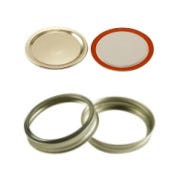
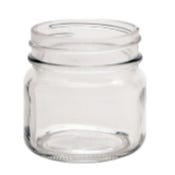
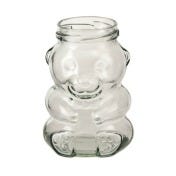



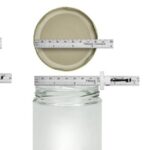

I am confused on preserving with honey. You say it is okay to go straight honey, but the National Center for Home Food Preservation says to only replace partial sugar with honey. Why? I have always followed this site because I have heard everything is tested safe here. They say this about preserving with honey: “Corn syrup and honey may be used to replace part of the sugar in recipes, but too much will mask the fruit flavor and alter the gel structure. Use tested recipes for replacing sugar with honey and corn syrup. Do not try to reduce the amount of sugar in traditional recipes. Too little sugar prevents gelling and may allow yeasts and molds to grow.” Please help me understand the ability to can with honey. I’d love to make shelf stable preserves this way.
Hi Nancee, Thank you for your question- it’s a good one. As we mentioned in the “Important things to keep in mind” portion of this blog post, we recommend Pomona’s Pectin when reducing or substituting for processed sugar.Most pectin�s need sugar to activate them to produce a set. Pomona�s Pectin is different – it is a low-methoxyl pectin and it does not need sugar to produce a set. It uses calcium to activate the set, which is included in each package of the pectin. However, it is important to recognize that even with Pomona’s (as with all preserving recipes) there are limits, and thus guidelines to follow in order to preserve safely. Such guidelines/limitations are explained in the literature that accompanies each Pomona’s packet and is available on their website.
We found this on the National Center for Home Food Preservation Site and thought it would be helpful:
“Jams and jellies with reduced sugar:
Jellies and jams that contain modified pectin, gelatin, or gums may be made with non-caloric sweeteners. Jams with less sugar than usual also may be made with concentrated fruit pulp, which contains less liquid and less sugar. See Guide 7 of the USDA Complete Guide to Home Canning for recipes.
Two types of modified pectin are available for home use. One gels with one-third less sugar. The other is a low-methoxyl pectin which requires a source of calcium for gelling. To prevent spoilage, jars of these products must be processed longer in a boiling-water canner. Recipes and processing times provided with each modified pectin product must be followed carefully. The proportions of acids and fruits should not be altered, as spoilage may result.
Acceptably gelled refrigerator fruit spreads also may be made with gelatin and sugar substitutes. Such products spoil at room temperature, must be refrigerated, and should be eaten within 1 month.”
It’s an important to note that the majority of “traditional recipes” or those initially put out by Ball & NCHFP are relying on the use of sugar for the set. Some of them don’t even call for additional pectin – those using fruits with naturally higher levels of pectin, or that call for greater quantities of sugar. We would not recommend trying to substitute the sweetener in such recipes unless they’ve been tested by a reliable source.
I hope that we’ve helped to answer your questions.